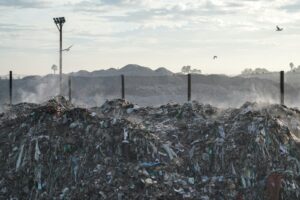The changing face of WEEE recycling
The WEEE recycling landscape has changed significantly in the last ten years, both in the UK and overseas.
When my business partner and I set up Pure Planet Recycling in 2007, nobody had really heard of Waste Electrical and Electronic Equipment recycling. The WEEE Regulations 2006 had only just come into force and knowledge on the subject was still very limited.
More often than not, people simply put their old electronics in the bin and didn’t worry about what happened to them.
After a year working on the business, the 2008 recession hit and it could have stopped us in our tracks. Customers were unsure on new equipment purchases so they were reluctant to dispose of old items. We didn’t see it coming but – as a fledgling company – we were in a unique position to be able to adapt quickly to the changing market. Fortunately, we were able to ride out this season and see growth once the market improved.
Over the following years, education on the disposal of electrical waste steadily increased, which has undoubtedly had a positive effect on the industry as a whole.
With better education, the operating environment gradually became easier. Customers and the general public began to understand what they needed to do with their waste and just needed to know how to find a suitable supplier.
The introduction of ISO14001 helped in that respect, by weeding out the good suppliers from the bad. Now, there’s an expectation that suppliers must have a waste management permit, correct procedures in place and up-to-date paperwork. Achieving our own ISO14001 accreditation was a huge milestone for us.
Over the years the Environment Agency has also cracked down on illegal waste operators including overseas shipments of electrical waste.
Over the course of 12 months from 2015 to 2016, a national EA taskforce shut down almost 1,000 illegal waste sites and prosecuted more than 50 waste firms. Although not all linked to electrical waste, it shows the large-scale problem within the waste and recycling industry as a whole.
It was big news in the industry and reiterated to us the importance of processing our waste correctly here in the UK. It also reaffirmed the importance of using a licenced operator and one who can supply a traceable audit trail.
2017-2027 – what’s in store next for WEEE recycling?
Looking at the increasing levels of WEEE recycling awareness over the past decade, it would be easy to become complacent. But between now and 2027, it’s vital we continue further to educate on the ability to recover materials from the waste or reuse of equipment, prior to disposal.
Materials is one area that has undergone a huge amount of change and it’s a trend that will continue. Where we once saw lots of precious metals used in electronics, technological changes have resulted in lower-grade materials being used in manufacturing. This has a knock-on effect on the value of the materials inside the items as well as the durability of the equipment itself.
The demand for consumer electronics will continue to rise, of course, which will produce more electrical waste. Reuse will be still a big factor but – as items aren’t generally made to last – waste recycling will remain a priority.
On the other hand, as new products are developed, we’re seeing less hazardous materials being used. For example, fluorescent light tubes – with mercury phosphor inside – are being replaced by LED lights. These are much less hazardous and easier to recycle and this type of replacement will become more common as the industry moves on.
For now, we’re acutely aware that the ability to adapt to the changing landscape has been, and will continue to be, our strongest feature. We’re using the successes and failures of the last ten years to inform our processes for the next decade. Because if one thing is for certain, WEEE recycling between now and 2027 will bring up plenty of new challenges. And our goal is to meet those challenges head on.
Photo by Adam Tinworth 















